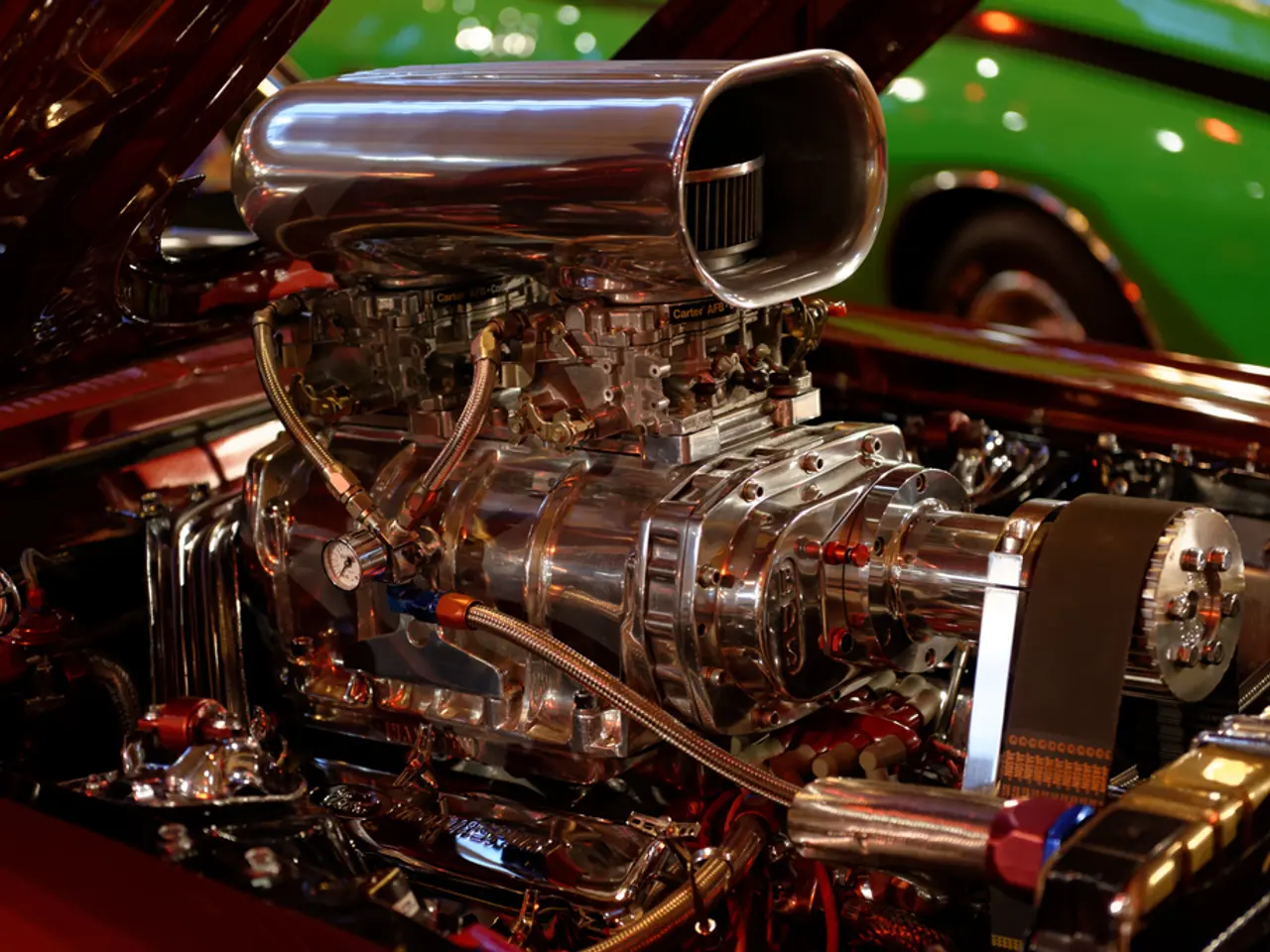A New Era for Lexus ES: Emotional Electric Debut
Premiere of Lexus ES in Europe - Colorful and Shaped with Elegance
Let's talk about the fresh, revamped Lexus ES - it's not just about comfort and style anymore. This baby's got an emotional connection! But don't expect fancy V8s roaring under the hood, my friend. Germany isn't exactly a Lexus hotspot, and even the diehard Japanese fans seem happy with smaller engines. Even their luxury flagship LS ditched the V8. Still, the ES was never about big engines, unlike the GS, where six cylinders were the maximum. Interestingly, Lexus has revamped the ES series instead of the GS and brought it to Europe [1][2].
The ES's top model, the ES 500e, is more than just a powerful vehicle; it's a silent, electric powerhouse boasting 343 hp. That's plenty to ensure a smooth, exhilarating ride without busting a gut (not that we'd mind in this segment). While Lexus isn't spilling the beans about the top speed just yet, they promise an impressive 5.3 seconds for the sprint to 100km/h [1][2]. And let's not forget, the ES comes with all-wheel drive and boasts an impressive WLTP range of 530 kilometers.
For those who prefer a more relaxed, budget-friendly ride, the ES 350e offers a more laidback 224 hp and a 77 kWh battery, with a 0-100 km/h time of 8.2 seconds [1][2]. The electric base model's range hasn't been communicated yet. Range anxiety sufferers needn't worry, as Lexus offers a hybrid ES 300h, featuring a system output of 201 hp [1][2]. You can choose between all-wheel drive and front-wheel drive, with a typical 2.5-liter gasoline engine handling the internal combustion part. The standard sprint to 100 km/h should take around 8 seconds [1][2].
But fear not, the ES isn't just about powertrains. These are rather modest compared to the competition, but Lexus truly shines when it comes to comfort. At 5.14 meters in length, the ES almost reaches upper-class size and even outshines the current BMW 5-series in terms of length. However, the Germans package better, offering a wheelbase of three meters, while the ES falls just short with 2.95 meters [1][2]. But worry not, the legroom in the ES feels almost regal, thanks to the compact design of the axles and space-saving electric components [1][2].
Lexus hasn't skimped on driving dynamics either, leveraging a new rear axle construction with a multi-link suspension and variable-ratio steering for a smooth, high-tech handling experience [1][2]. The question remains: will the new ES be more comfortable and precise than its predecessor? Time will tell.
The interior designers have also stepped up their game, offering a clean, well-organized console with a large central touchscreen and fancy lighting, exuding undeniable luxury [1][2]. Lexus decided against physical buttons, opting instead for touch-sensitive surfaces [1][2]. The infotainment interface is designed by European designers, offering shortcuts, widgets, and a special EV menu for accessing charging information [1][2]. Drivers can even manually start optimizing the battery temperature in preparation for charging.
The maximum charging power remains at 150 kW, but Lexus estimates a charging hub will take the ES from 10% to 80% in 30 minutes. While that's not bad, it's not the fastest in the segment [1][2].
Lucky for us, the new, emotion-filled and significantly larger Lexus ES is set to hit the market in spring 2026 [1][2]. Sit tight, folks!
Sources:[1] NTV.de[2] Lexus.com
- Lexus Models
- Automotive Industry
In light of the transformation in the Lexus ES, it's evident that the brand is expanding its scope beyond traditional aspects such as comfort and style. The introduction of vocational training programs could be integrated within the community policy to ensure a skilled workforce for the production of these electric vehicles, particularly in the finance department, which oversees the investment in technology and development of these innovative powertrains.
As the ES 500e and ES 350e offer a significant range on electric power, investing in efficient charging infrastructure would be crucial for promoting their adoption. This would involve collaborations with various stakeholders, including manufacturers of charging stations and electricity providers, to ensure seamless, cost-effective charging solutions across the community.




